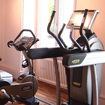7B - Water: Facts and Myths
Elementary level
Description
Materials
Main Aims
-
By the end of the lesson, students will have had gist and detailed reading practice using a text about facts and myths about water in the context of health.
Subsidiary Aims
-
By the end of the lesson, students will have revised the use of quantifiers and determiners (some, any, a lot, many, much) through a speaking activity for fluency in the context of health.
Procedure (51-60 minutes)
T will provide several pictures that have one thing in common to set the general context. T will use the pictures to elicit some activities you can do with water (main focus --> swimming) Set Task: "Look at these pictures. What do all these pictures need? (water) What can you do with water? (make plants grow, surf, swim, etc.)
T will then ask: "Has anyone heard that you should not go swimming right after you eat because it will hurt your stomach? Do you think this is true or not? It's false....it won't hurt your stomach at all. When we something is true, what do we call it? (Fact) Is it always true? (yes) What about when a lot of people think something is true, but its really false? (myth) Is it always true? (no) Do a lot of people think its true? (yes) Can it be bad? (yes) is it always bad? (no) T will introduce reading and elicit highlighted vocab in the reading and questions (temperature, at least, in fact, sweat, contain, experiments, recently, dehydrated) Elicitation prompt: "What is a word for something that happened a short time ago?" (probably get past - go for recently) Is it hot or cold now? (hot) But recently it was (cold) What is the word for how hot or cold it is? (draw pic if needed - temperature) When the temperature is really hot, people (sweat) When you sweat, you need to (drink a lot of water)? How much? What is the smallest you can drink? What are the two words we use to say this? You need to drink (at least).... How could we find out if this is true? (facts) Who finds out facts? (scientists) What do scientists do? (experiments) (draw a bottle) when we put something inside, we say it (contains) water. If you don't drink enough water, what happens? (dehydrated) People don't need to drink water when they sweat. Is this true? No. We say two words when we are going to say the truth..... (in fact)
Put questions from 4a on PPT and have the students discuss them in pairs for two minutes. ST: "In pairs, try to answer the questions. You have three minutes."
In pairs, Ss will skim the texts and try to match the questions with each paragraph of the reading. Set Task: "Here is the reading. (hand out just the reading) Each part answers one of these questions. In pairs, you will match the questions with each part. Let's do the first one together. Read the first part. Which question would be the best to use? So I will put them together like this." ICQ: Are you going to work in pairs? (yes) Are you going to put the questions next to the correct part? (yes) Are you going to read quickly? (yes) Do you need to read every word? (no) You have three minutes. After, Ss check others' answers and T provides answer key (full text with titles). T hands out highlighters. Ss will scan and highlight new words in the reading. ST: "Find the new words in the text. Highlight them. (DEMO WITH 'MYTH' and show how I am looking at whole line). You have one minute." ICQs: "Are you reading the whole text? (no) Are you just looking for the words? (yes) How many minutes do you have? (one) So are you going to read quickly? (yes)" After, students work in pairs to match the words to their definitions. ST: "In pairs, write the words next to their definitions. You can use the text to help you." DEMO WITH MYTH
Ss will read the article looking for facts and myths. They will write them on the T-chart provided. ST: "Now, I want you to read again carefully. When you read, I want you to write down some facts and myths you see." (DEMO) (after reading) "Share with a partner. Write down what you don't have." (after) "What were some facts you found? Myths? (SHORT)"
Ss will discuss whether they agree or disagree with anything in the article in pairs. Depending on time, Ss will then decide in pairs on three important facts or advice about water that they want to tell people. DEMO. If there is a lot of time at the end, students will walk around and share their advice with other classmates. Brief delayed error correction (focus on recent grammar and vocabulary usage)

